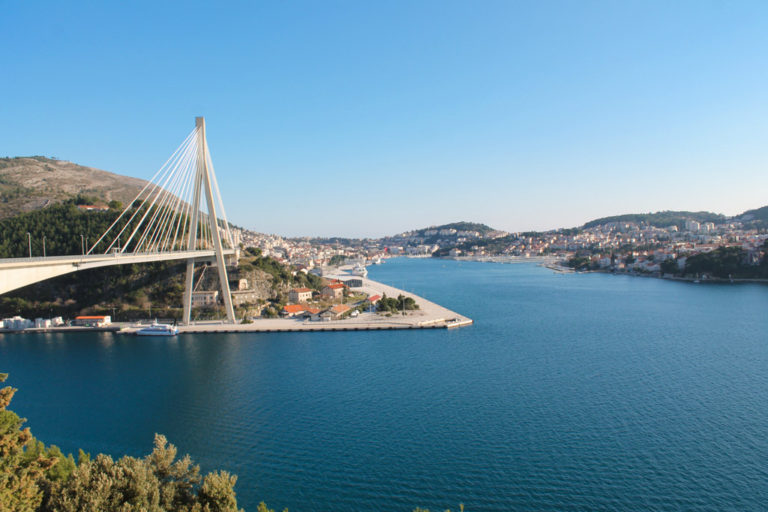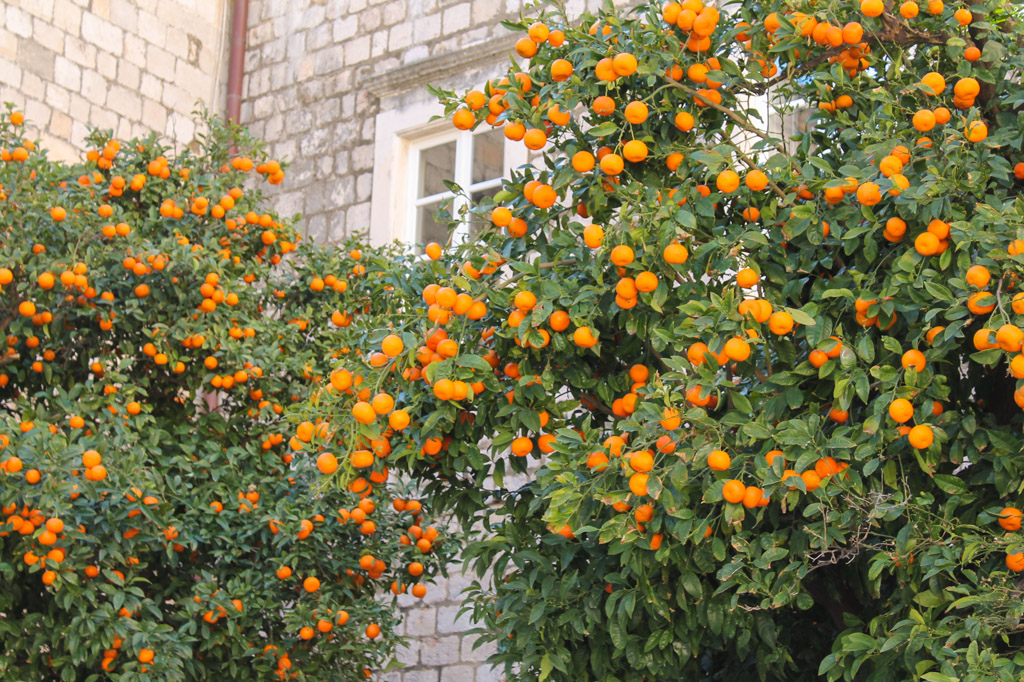12 basic facts to know about Dubrovnik before your visit
If this little gem on Unesco’s heritage list is on your bucket list, then you’ve made the right choice. And here are some basic facts about Dubrovnik you should know before you visit.
Geography: Dubrovnik lies on the southern part of Croatia’s coastline, also known as Dalmatia. Does this name ring a bell? You’re right. Who hasn’t heard of Dalmatian dogs?
Population: around 42000
Economy: Although a small city, Dubrovnik is one of Croatia’s prime tourist spots. Its economy depends on tourism and tourism-related activities to a great extent. No wonder, if you know that in 2019, Dubrovnik had around 1,4 million visitors, staying in one of its fifty hotels, or homestays and holiday homes. On top of that, the city had incredible 800 000 visitors from cruise ships.
Language: the official language in Dubrovnik is the Croatian language. It belongs to the group of Slavic languages.
But don’t worry, you don’t have to start learning Croatian. English is the first foreign language taught at schools. This means that a considerable number of people understand and can communicate in English, especially among younger generations.
Money: as of January 1, 2023, Croatia entered the euro zone, adopting Euro as its official currency, and replacing Croatian Kuna as the means of payment.
If you check in a Croatian dictionary, you’ll find out that the word kuna stands for a small weasel-like animal—the marten. Its pelt was highly valued and used as a form of payment in the Middle Ages in Croatia.
Methods of payments/Getting Euros: you’ll find ATMs all around the city. Visa, Maestro, and MasterCard are the most commonly used and accepted cards. It’s good to get informed on the charges taken on the foreign card payments and money withdrawal. Most places (but not all!) accept credit cards, so it’s good to have some cash with you as well.
In the old town, you’ll find numerous exchange offices and a couple of banks as well.
Public restrooms: In Dubrovnik, you’ll find public restrooms in the old harbor and right outside the old town.
Please note that in Dubrovnik, Croatia, a public restroom doesn’t necessarily mean free of charge (sometimes they are, and sometimes not).
For instance, the public restrooms in and right outside the old town are payable. You’ll need one euro in euro coins (the machine will accept 1 euro or 50 cents coins), and you’ll need to have the exact amount of money to pay for the restrooms.
Dubrovnik card: if you are staying in Dubrovnik for a couple of days or planning to visit more than one site, you may want to consider buying the Dubrovnik card.
It comes in three types: 1-Day, 3-Day, and 7-Day package. It offers entrances to a different number of cultural-historical monuments, as well as some other benefits, like daily public bus tickets.
The pass can be a great money saver, but make sure it meets your needs. For more info, check here.

The view of Gruž bay and the main Dubrovnik port on the left
Getting to Dubrovnik from:
Dubrovnik airport
Dubrovnik is a predominantly fly-in destination, due to its geographical location in the southernmost part of Croatia’s coastline.
It means that a big majority of visitors arrive by plane.
Dubrovnik and its area are served by the airport of Čilipi, better knowns as Dubrovnik airport. It is situated around 20 km (12,5 mi) from the city centre. In 2019, almost 2.900.000 passengers went through the airport.
There are various ways to get to Dubrovnik from the airport:
- Airport shuttle buses depart usually 30 minutes after every flight arrival and will cost you around 7,5 Euro. In the city, they make two stops—at the old town Pile square and at the main bus terminal in Gruž.
- Local bus service. There are several lines, but they are not connected to flight arrivals.
- Taxi service.
- Prearranged transfers.
- Rent-a-car
The seaport of Gruž
The port of Gruž is Dubrovnik’s main seaport. Apart from connecting Dubrovnik with other Croatian ports, the port of Gruž is very important in terms of cruise ship arrivals. In 2019, Dubrovnik had 800,000 visitors coming on the cruise ships, and the vast majority of them passed through Gruž harbor. The port itself is situated in Dubrovnik’s neighborhood of Gruž, only 3 km (1,8 mi) from the old town.
From Gruž port, you can reach the old town:
- By local buses (lines 1A or 1B).
- By taxi.
The port has two entrances/exits. Outside both, you’ll find taxi stations and bus stops. Upon cruise ship arrivals, the taxis will be waiting lined inside the port.
Public transportation:
If you want to use public transportation in Dubrovnik, you’ll have to use buses or taxis.
Dubrovnik bus company Libertas handles the public bus transportation in Dubrovnik and its area. You’ll recognize the public buses by their distinctive orange color. You can purchase the tickets on the bus or at the kiosks near the bus stops. The price of the one-way ticket purchased on the bus is 1,99 euros, and that of a daily ticket 5,31 euros.

Sour orange trees in Dubrovnik old town
Weather: Dubrovnik and its area enjoy the Mediterranean climate.
The average annual air temperature is around 16 celsius degrees, with around 130 sunny days or 2600 sunny hours yearly.
The summers are hot and dry, with the warmest and driest months being July and August (with an average air temperature of 25 celsius degrees). Don’t let this trick you. The highest temperature in Dubrovnik was measured in August 2012–38,4 celsius degrees.
In Dubrovnik, the swimming season lasts quite long. It can vary of course, but usually, it’s from mid-May to mid-October. The seawater is the warmest in July and August—with an average sea temperature of 25,5 celsius degres.
September and October are especially enjoyable months. The weather usually stays nice and warm, with the air temperature lower than when compared with summer highs, and the water temperature still enjoyable for swimming.
The rainy season starts with November, which holds the title of the wettest month.
The winters are mild and humid. The coldest month is January, with an average air temperature of 9 celsius degrees. Snow is very rare. It can happen every 7-8 years, and the month most likely to have snowfall is February.
